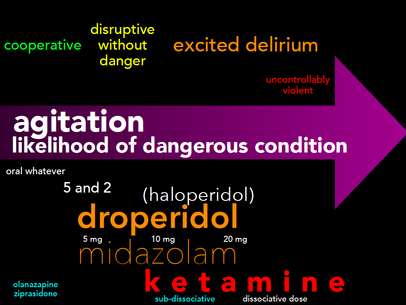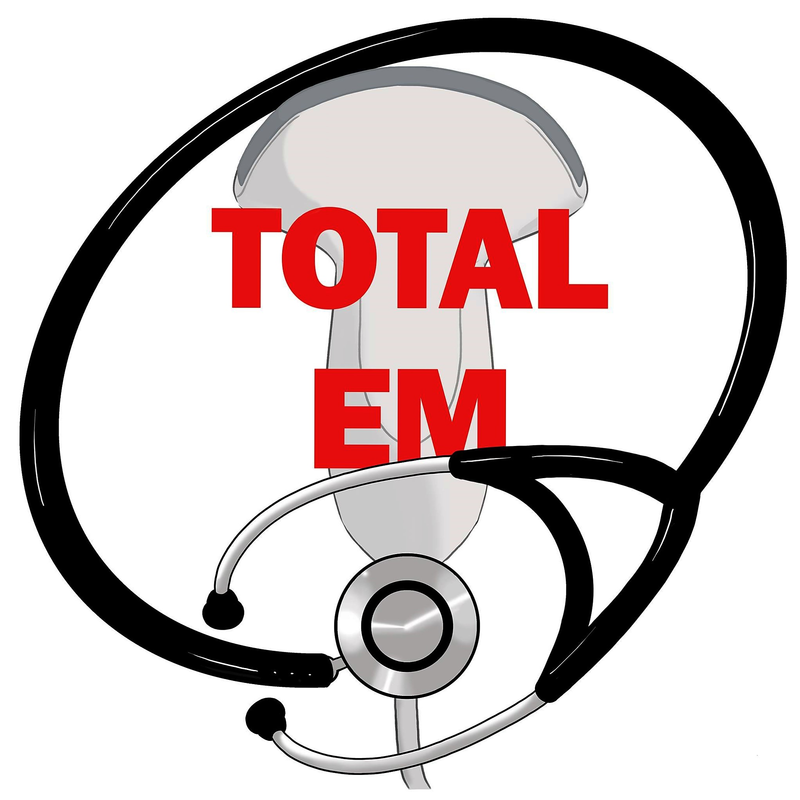|
Excited delirium has been covered quite a bit, but like other hot topics it is always changing with new evidence. Here are some of the key pearls and pitfalls to managing this high risk population.
There are levels of agitation and how you manage them. Reuben Strayer when at SMACC in Dublin, Ireland (#smaccDub) gave a very concise way of looking at how to manage such patients. As the infographic (borrowed from CORE EM) demonstrates, there are doses of these medications to work with in managing these patients. Simply, think of it as follows:
To control a patient with excited delirium, you need to be ready to manage immediately:
Let us know what you think by giving us feedback here in the comments section or contacting us on Twitter or Facebook. Remember to look us up on Libsyn and on iTunes. If you have any questions you can also comment below, email at [email protected], or send a message from the page. We hope to talk to everyone again soon. Until then, continue to provide total care everywhere.
2 Comments
Mahrukh Hameed
7/4/2018 10:23:24 am
This is an amazing and relevant topic of discussion for all ED docs ... thank you... I will use the color coding for coming up for a local guideline..
Reply
Chip Lange, PA-C
7/4/2018 10:47:41 am
Thank you and glad you found it helpful. Good luck with coming up on those guidelines.
Reply
Leave a Reply. |
Libsyn and iTunesWe are now on Libsyn and iTunes for your listening pleasure! Archives
August 2022
Categories |
||||||



 RSS Feed
RSS Feed